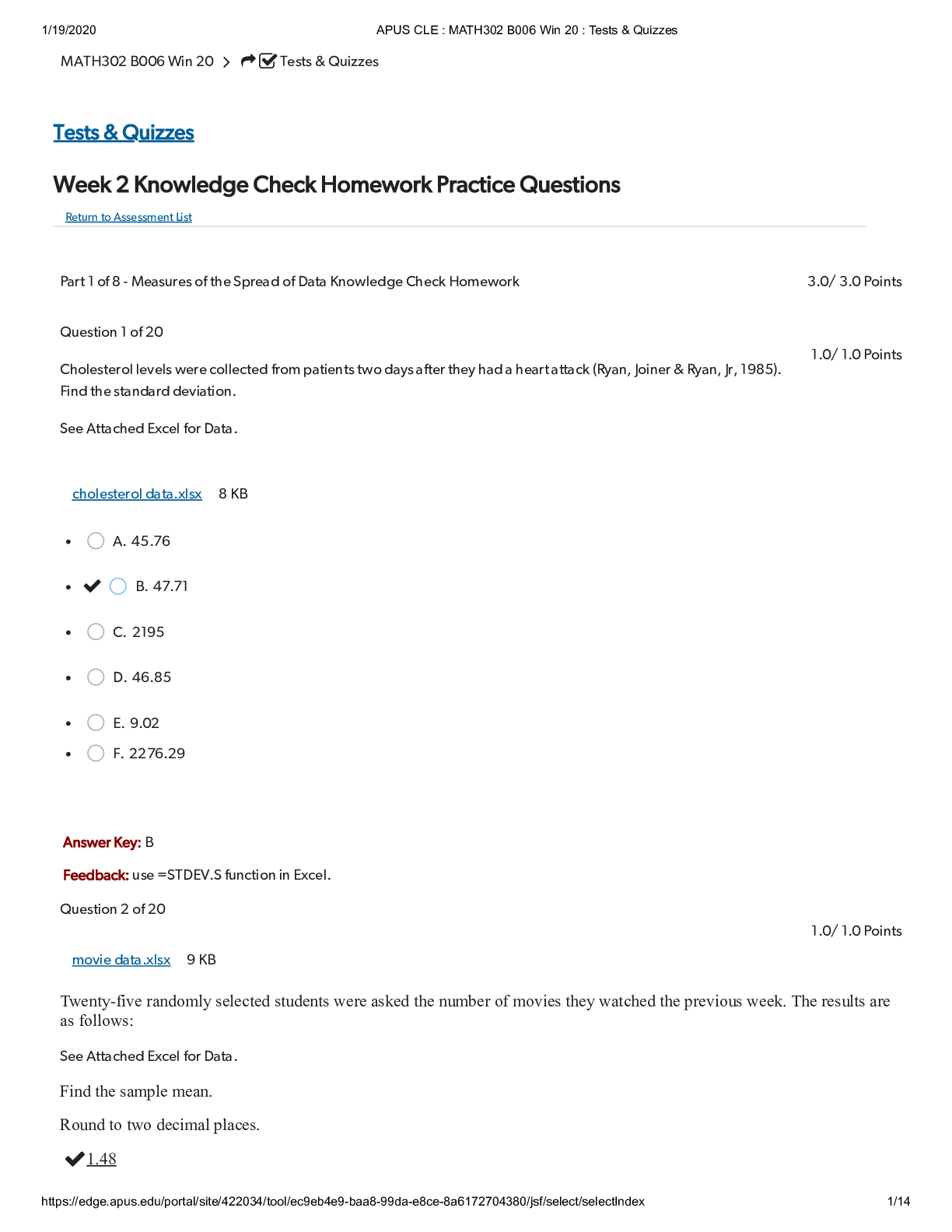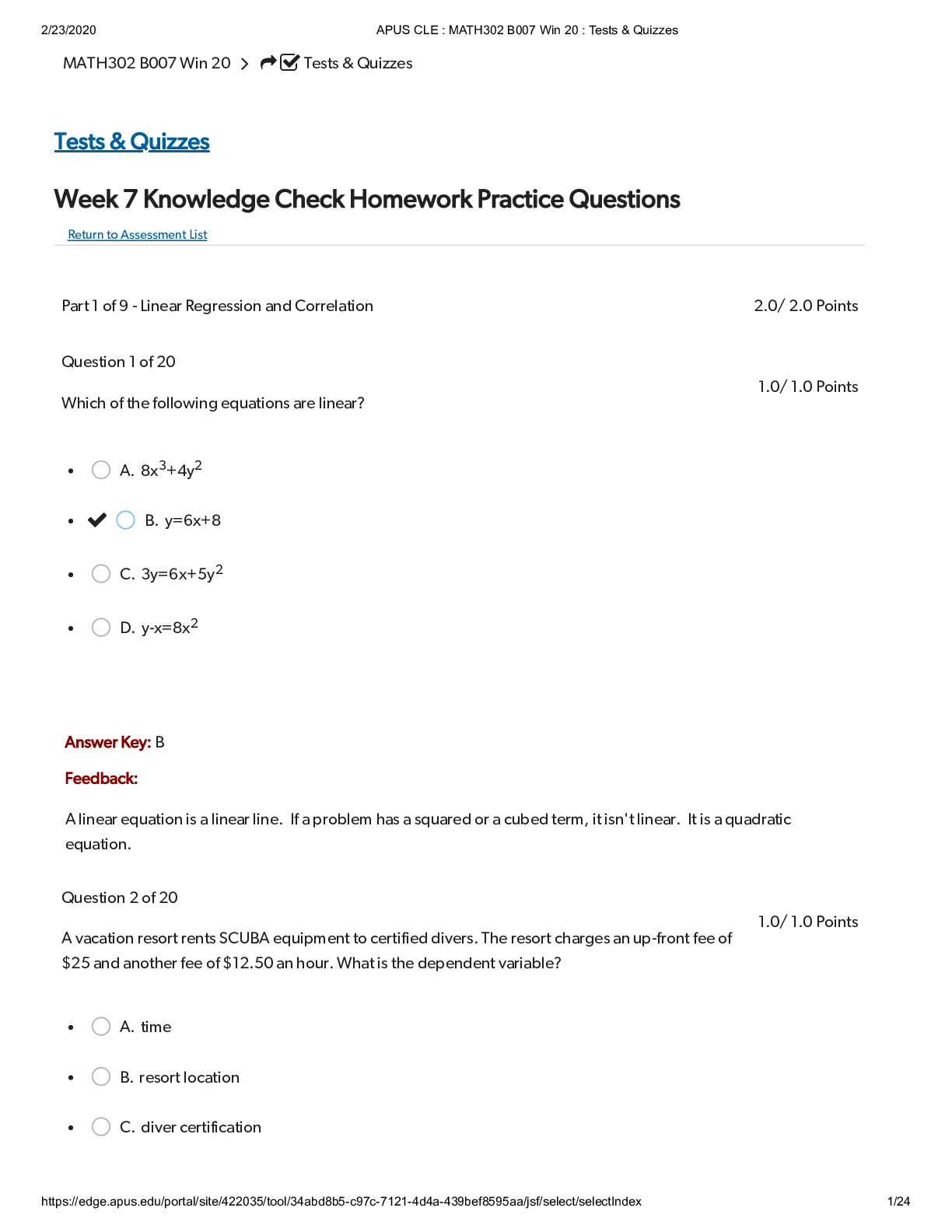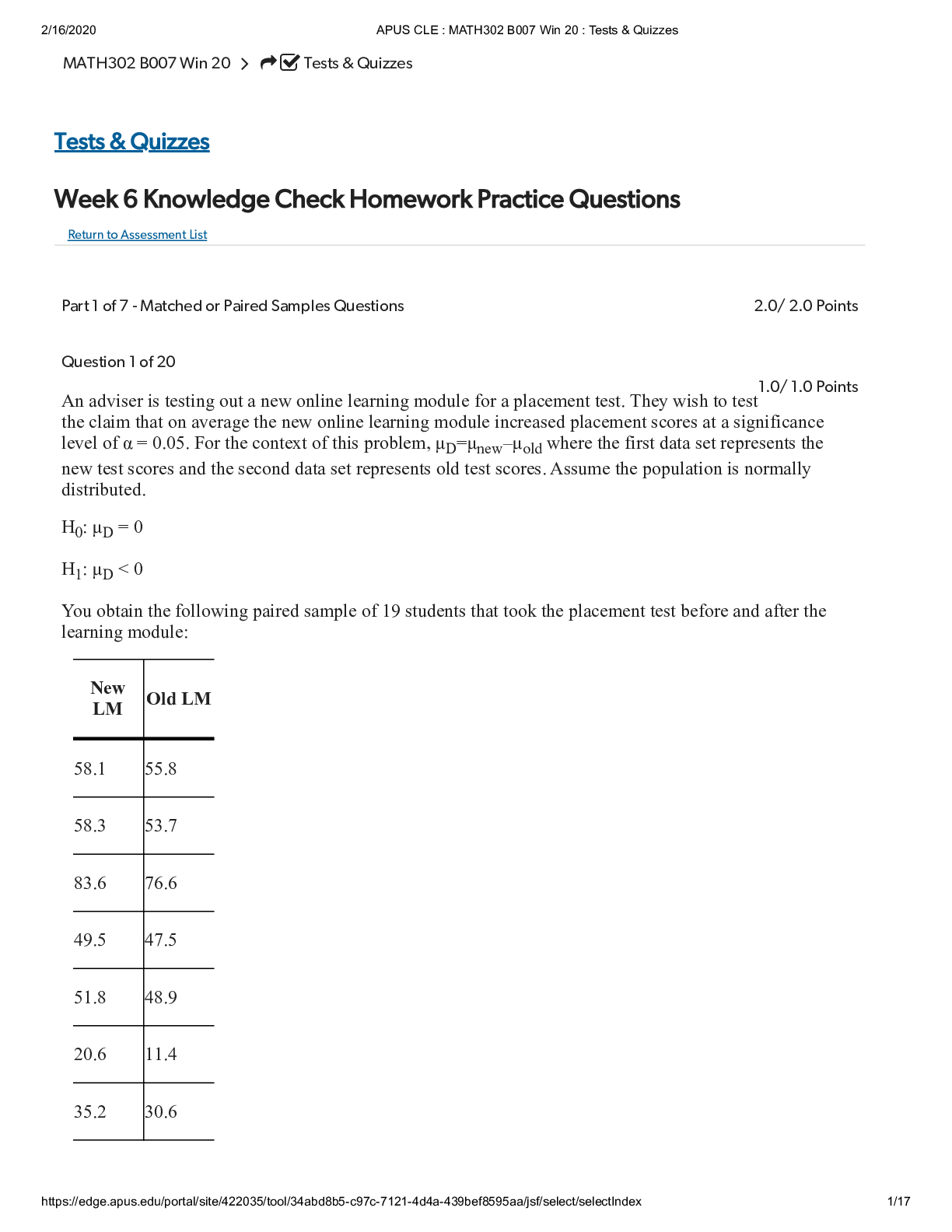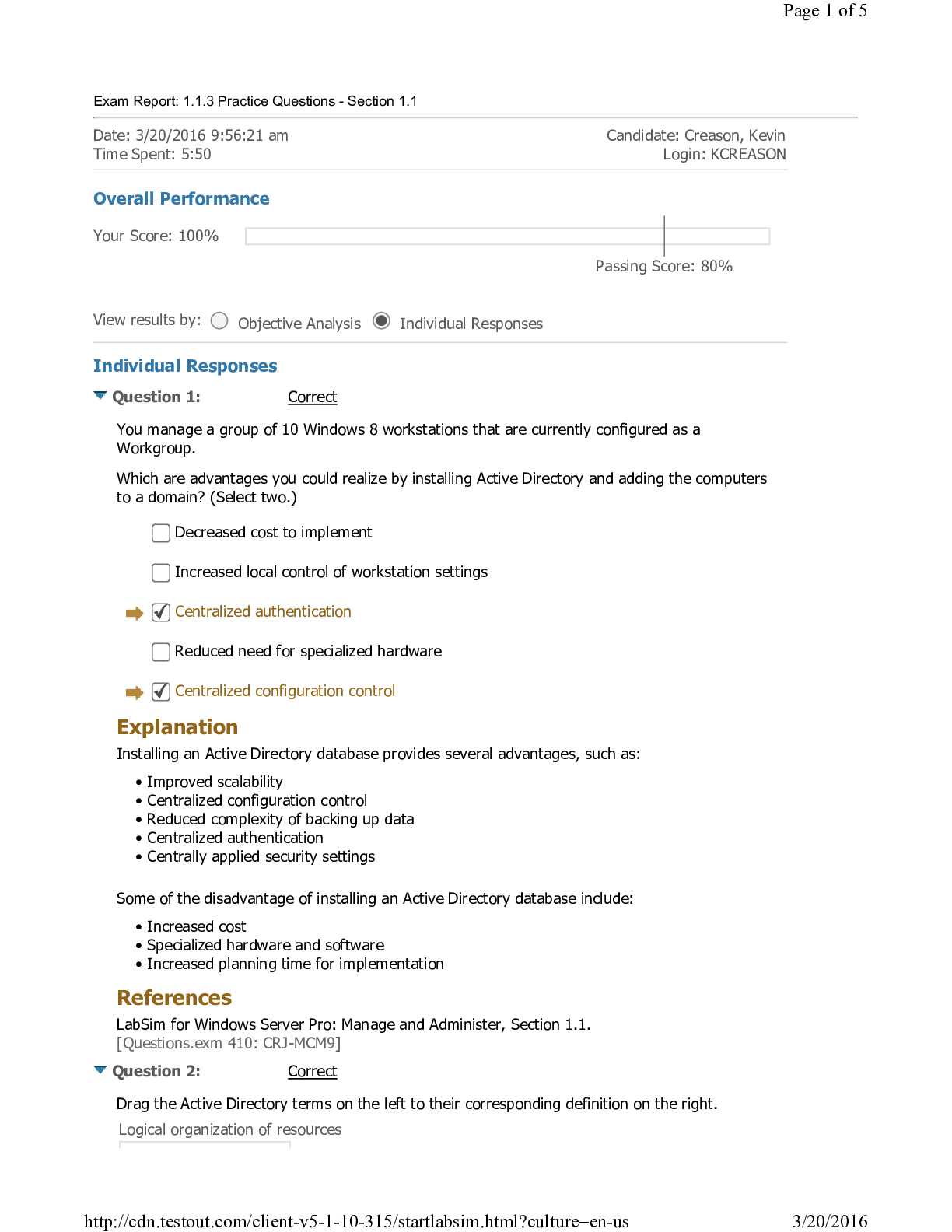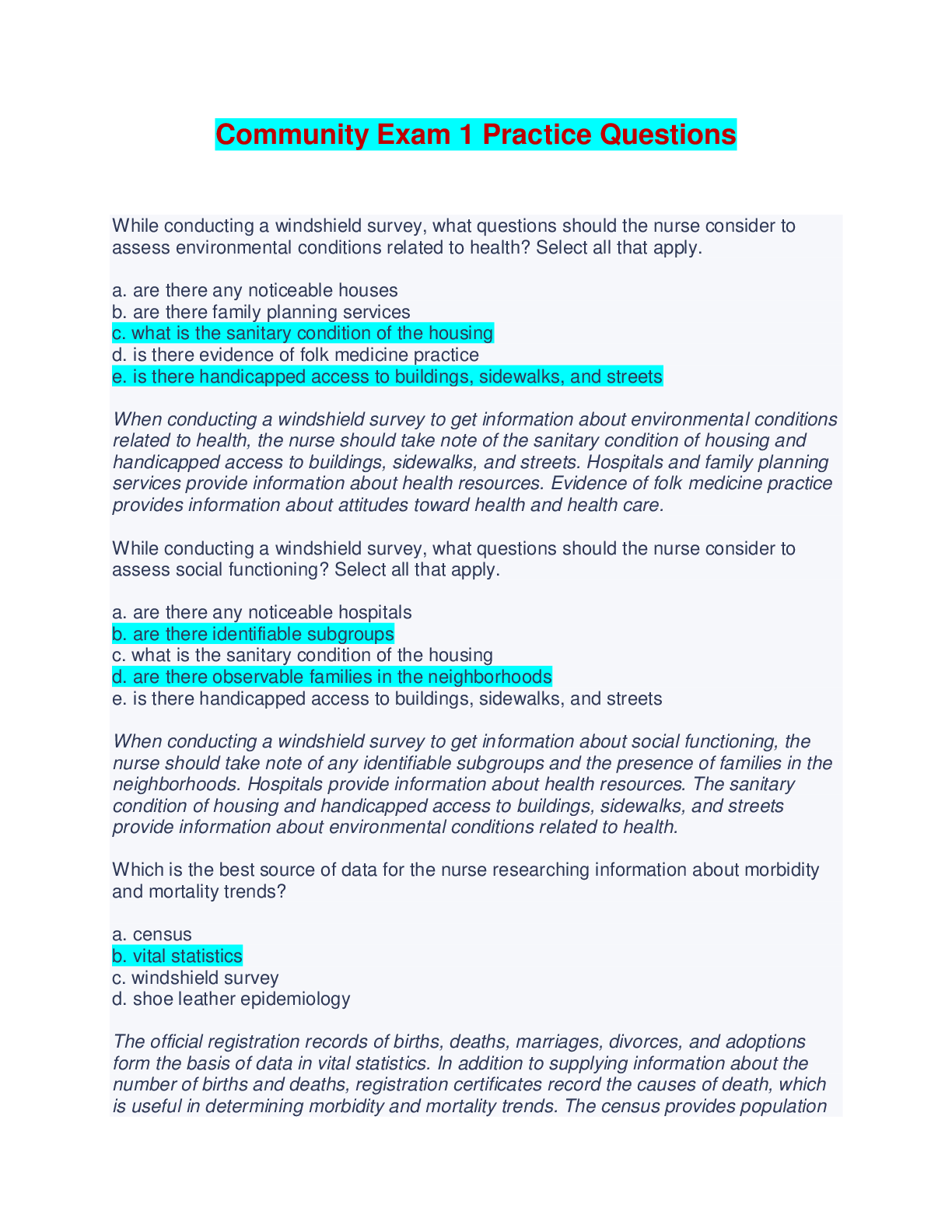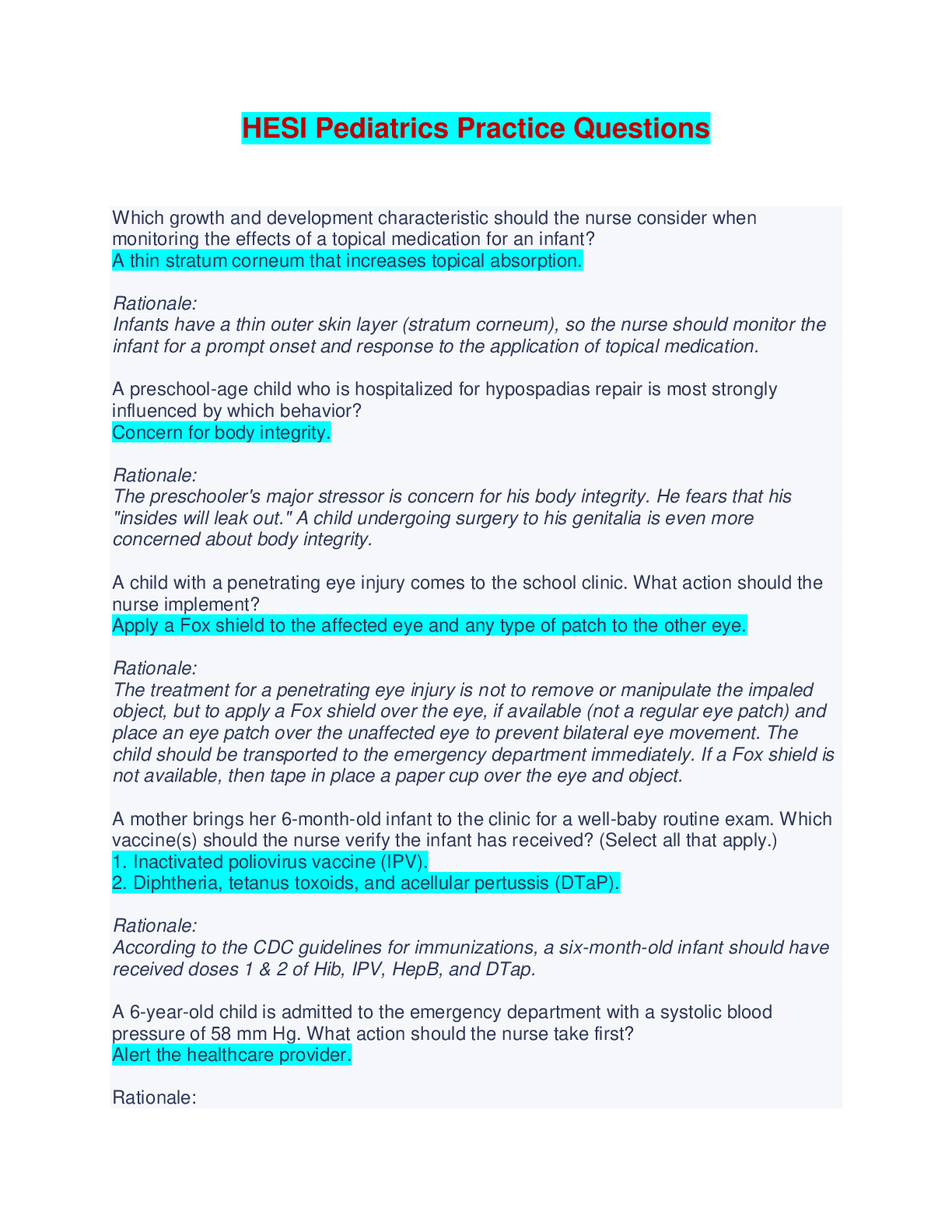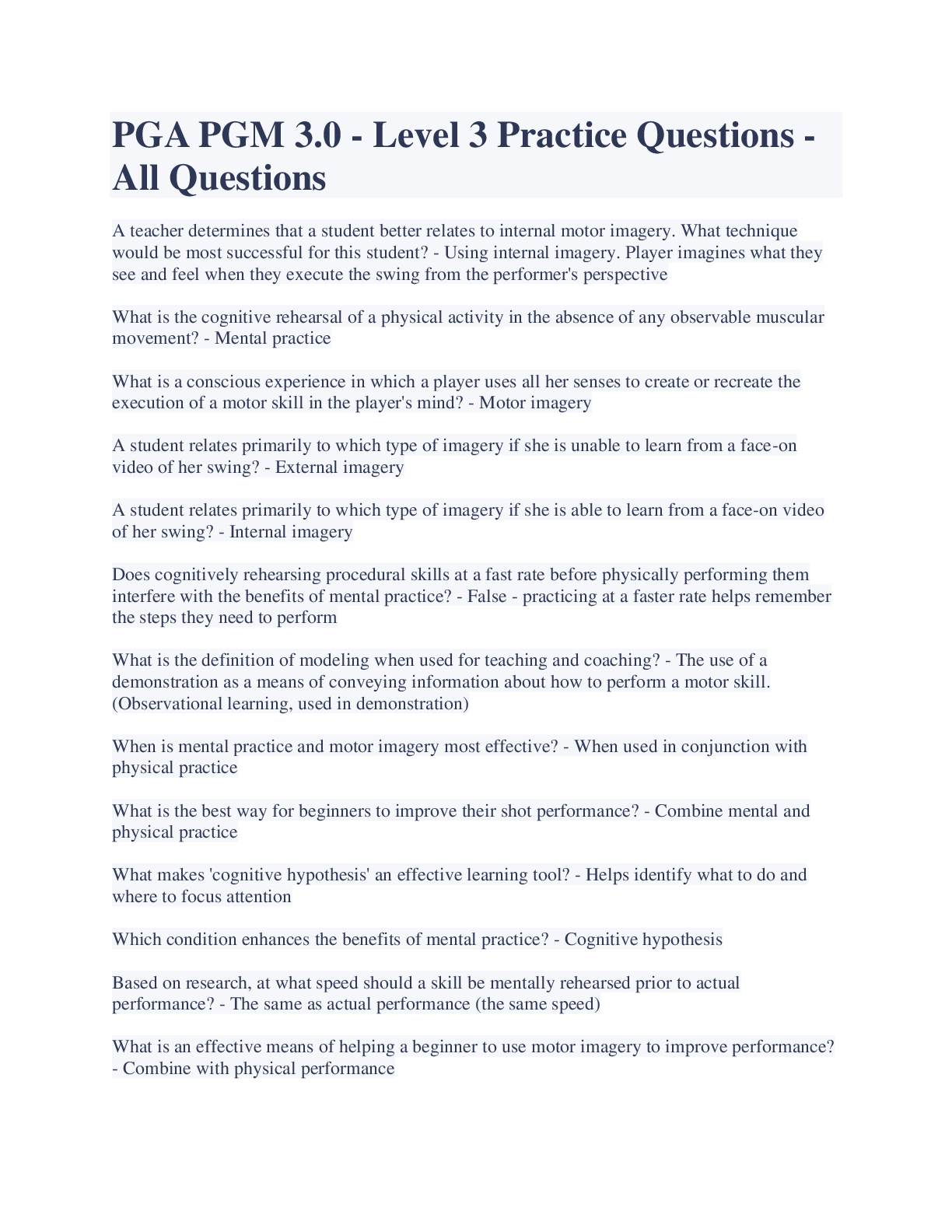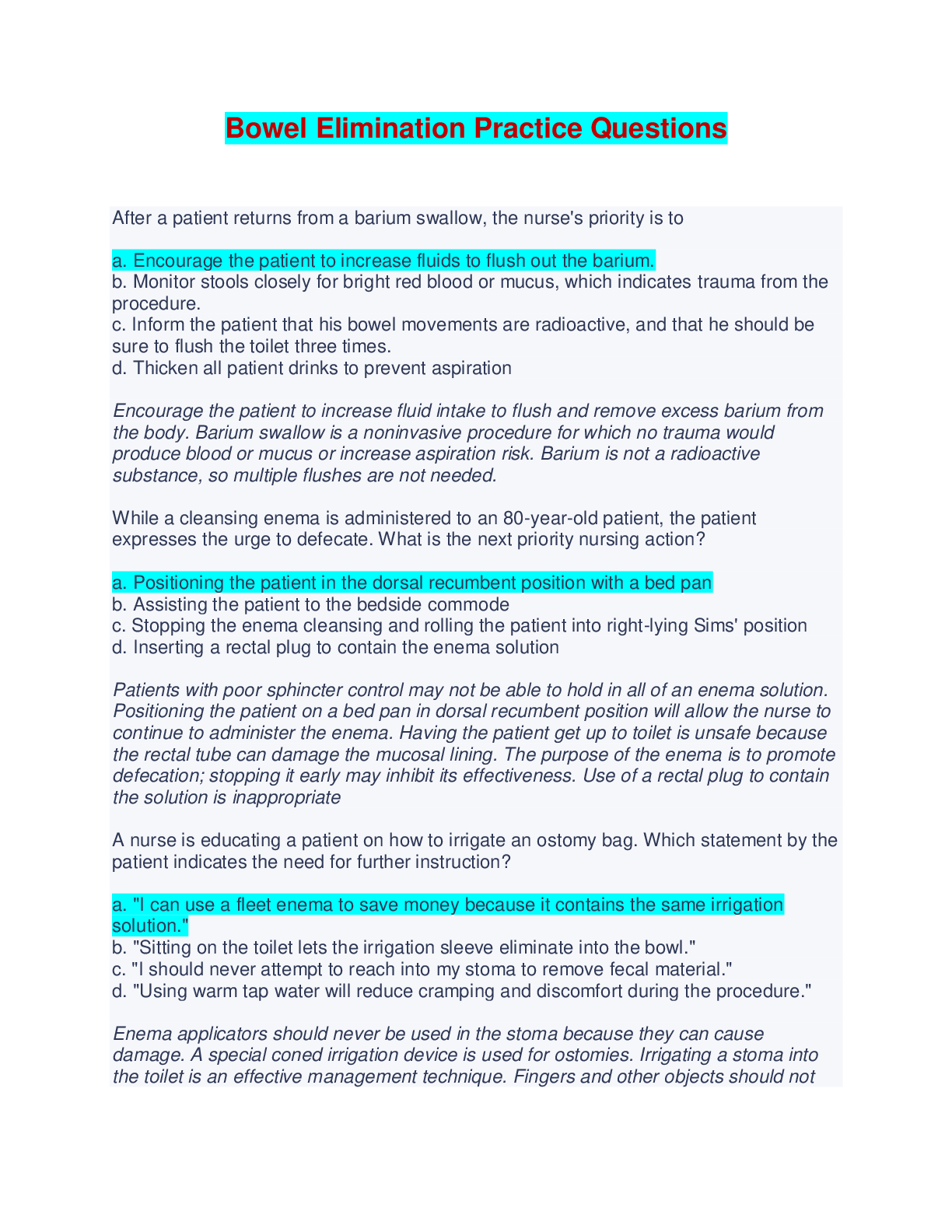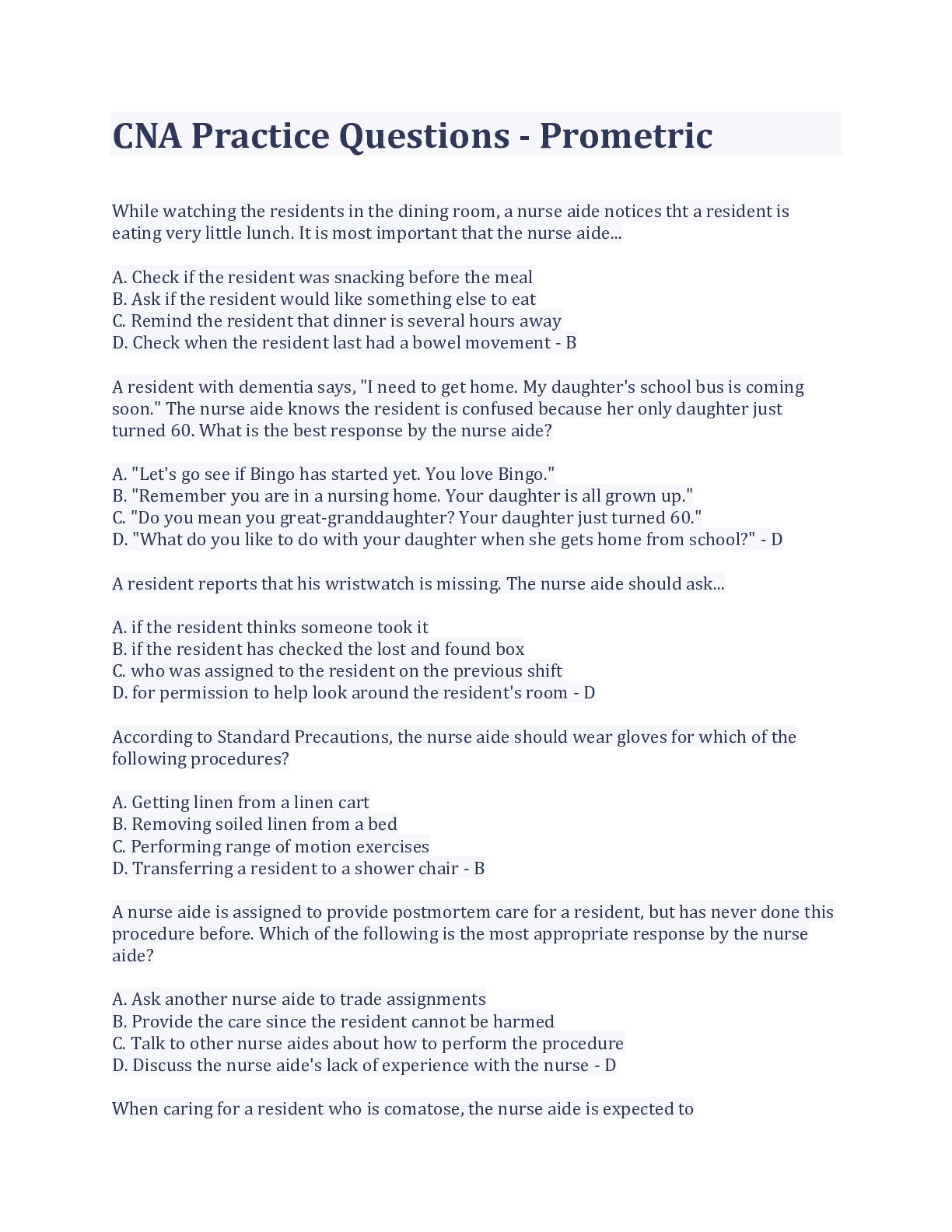Applied Psychology > EXAM > QABA Exam Practice Questions - Answered with Feedback (All)
QABA Exam Practice Questions - Answered with Feedback
Document Content and Description Below
QABA Exam Practice Questions - Answered with Feedback If you have an individual who engages in escape behaviors you should: A. Alternate antecedent interventions daily to see which ones are the most ... effective. B. Provide all antecedent interventions that can prevent escape. C. Tailor antecedent interventions to the person you support based on data from the FBA. D. Choose 3 antecedent interventions for escape maintained behaviors Feedback: You should tailor the antecedent interventions based on the data from the FBA. Just trying random interventions out without knowing how the person will respond is risky After cleaning up a work area contaminated with BBPs or OPIMs you observe blood on your arm. You identify the blood is not yours. Your skin is intact and you have no cuts or abrasions where you find the blood. What should you do? A. Wash the blood off of your skin with soap and water and do not report the incident as an exposure. B. Wash the blood off of your skin with soap and water and report the incident as an exposure immediately. C. Delay medical attention but report an exposure to your employer. D. Seek immediate medical attention but do not report the incident until evaluated. Feedback: Because the blood did not come in contact with your eyes, nose, mouth, or any broken skin, you do not need to report the incident. Which of the following behaviors might serve a "gain attention" function? A. Running out of the room B. Staring at a ceiling fan in a room C. Making silly noises D. Hiding in a closet Feedback: Making silly noises might serve as a "gain attention" function. A BBP exposure incident includes contact with blood or OPIM via all except: A. Intact skin B. Non-intact skin C. Mucous membrane D. Mouth Feedback: Contact with intact skin would not be considered a BBP exposure incident. Non-accidental, inappropriate contact or the use of force with an individual that causes injury or physical pain is considered which type of abuse? A. Mental/emotional abuse B. Sexual abuse C. Physical abuse D. Neglect Feedback: Physical abuse is non-accidental, inappropriate contact or the use of force with an individual that causes injury or physical pain. Physical abuse may include acts of violence, inappropriate punishments like confinement, or actions that usually cause pain and injury against adults who are incapable of expressing pain or injury. Which of the following is an example of discretionary effort as defined by Daniels (2000)? A. Cindy follows all of her supervisor's instructions and is never late to work. B. Susanna cleans the work area and organizes materials without being asked. C. Marco finds what his colleagues are doing incorrectly and trains them on the correct procedure. D. Lynn reads informational articles about ABA when she is at home. Feedback: Cleaning the work area and organizing materials without being asked is an example of discretionary effort. Which of the following best explains the primary purpose of the BACB's Professional and Ethical Compliance code? A. The purpose of the Professional and Ethical Compliance Code is to offer suggestions as how to treat clients and colleagues. B. The purpose of the Professional and Ethical Compliance Code is to restrict the practice of behavior analysis to certain well-defined circumstances. C. The purpose of the Professional and Ethical Compliance Code is to provide guidelines for certified and credentialed individuals to follow when they are providing behavior analysis services. D. The purpose of the Professional and Ethical Compliance Code is to mandate specific tasks and behaviors for all certified and credentialed individuals. Feedback: The purpose of the Professional and Ethical Compliance Code is to provide guidelines for providing behavior analytic services. Which of the following can be said about the uniqueness of people with autism? A. People with autism all have complex developmental needs. B. People with autism are more alike than different in terms of skills. C. While they may share some characteristics, people with autism are different from each other. D. The characteristics of those with autism make them more similar than not. Feedback: People with autism share some characteristics but are very different from one another. Which of the following best describes autism spectrum disorders? A. A range of developmental disorders that affect a person's ability to understand appropriate social etiquette B. Persistent deficits in social communication, social interaction, and engagement in repetitive or stereotypical movements that impair a person's everyday functioning C. 3 specific disorders that cause limitations in social communication, social interaction, and repetitive patterns of behavior D. A sliding scale of severity of intellectual disability based on an individual's ability to engage in appropriate social communication and spatial understanding Feedback: ASD results in persistent deficits in social communication, social interaction, and engagement in repetitive or stereotypical movements that impair a person's everyday functioning. When cleaning up a work [Show More]
Last updated: 1 year ago
Preview 1 out of 22 pages

Reviews( 0 )
Document information
Connected school, study & course
About the document
Uploaded On
Jan 23, 2023
Number of pages
22
Written in
Additional information
This document has been written for:
Uploaded
Jan 23, 2023
Downloads
0
Views
67







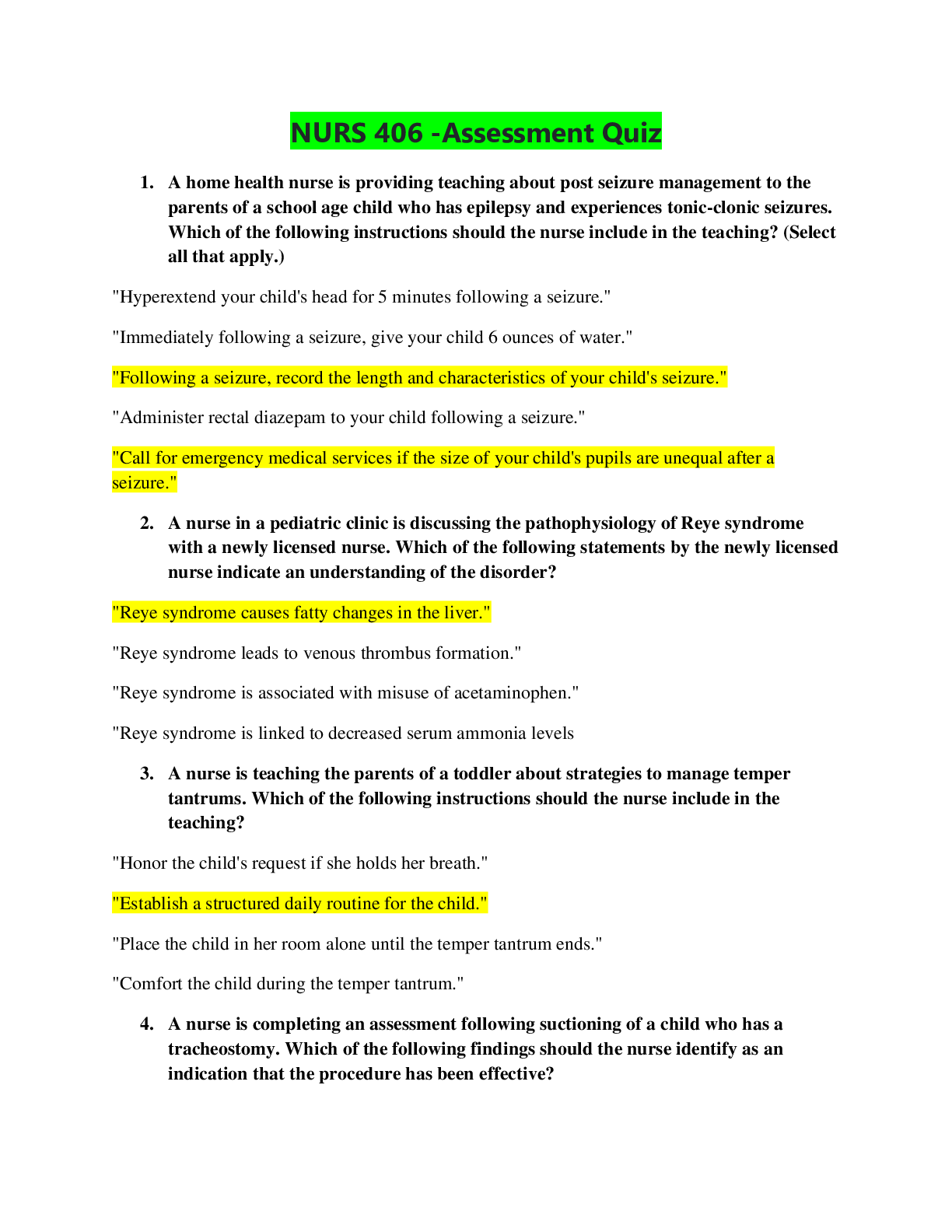



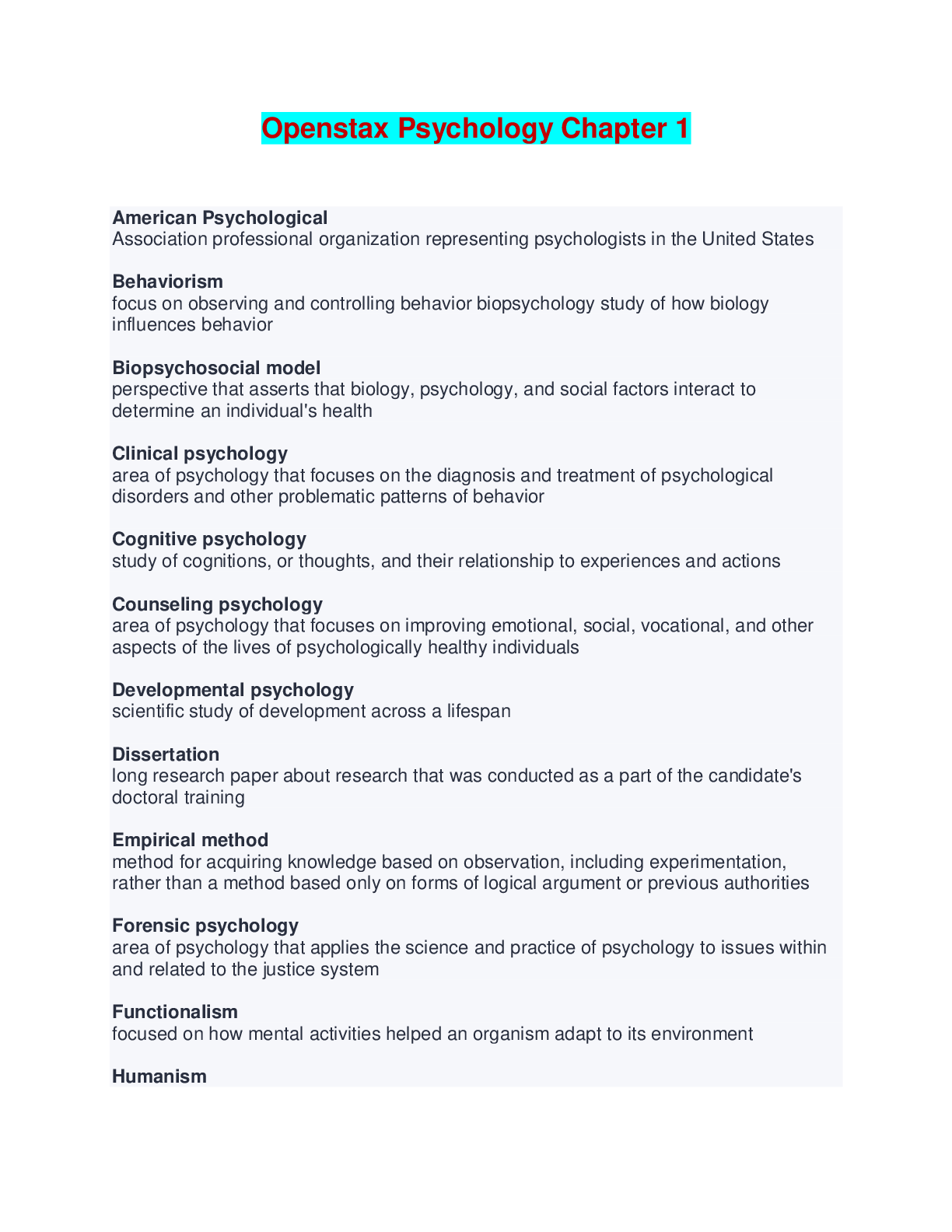
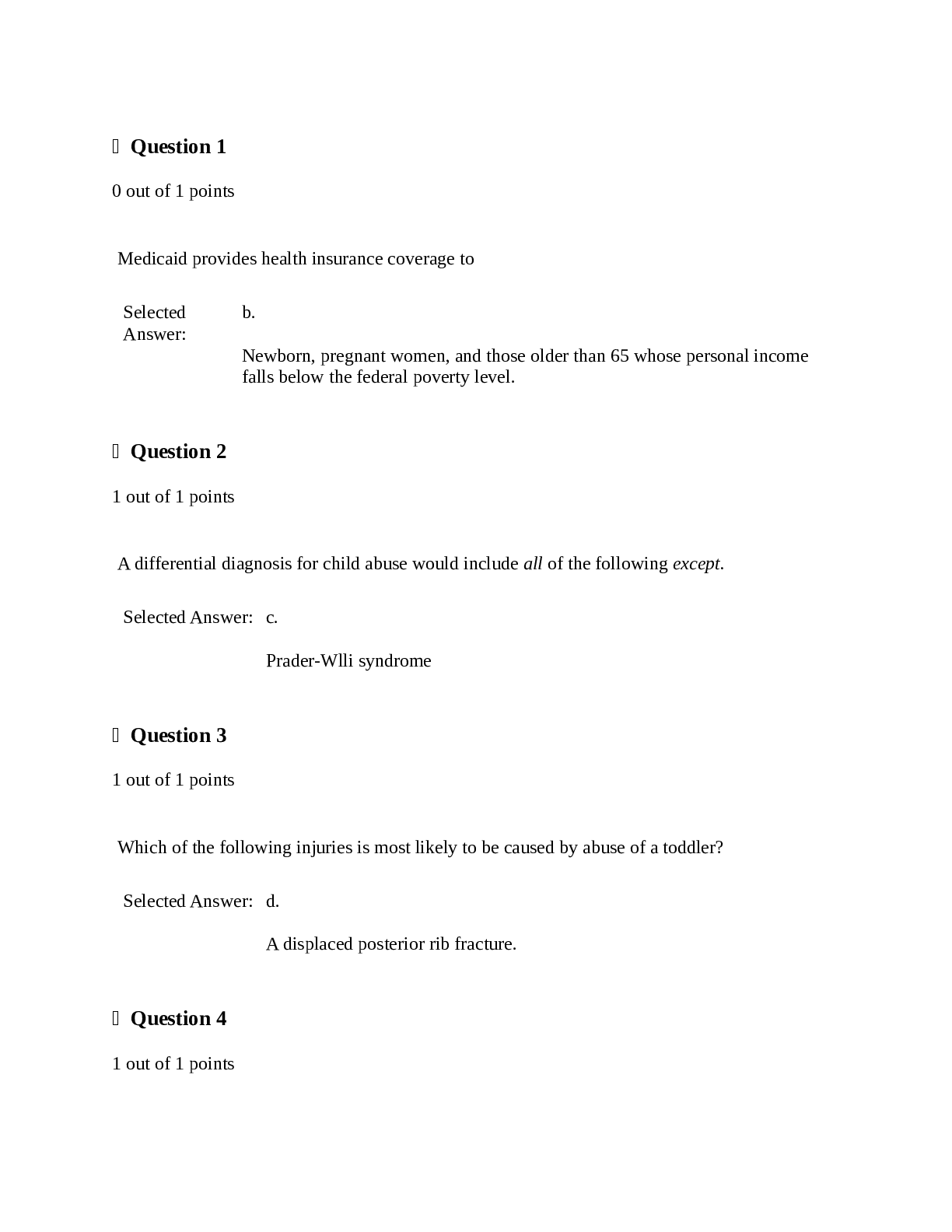
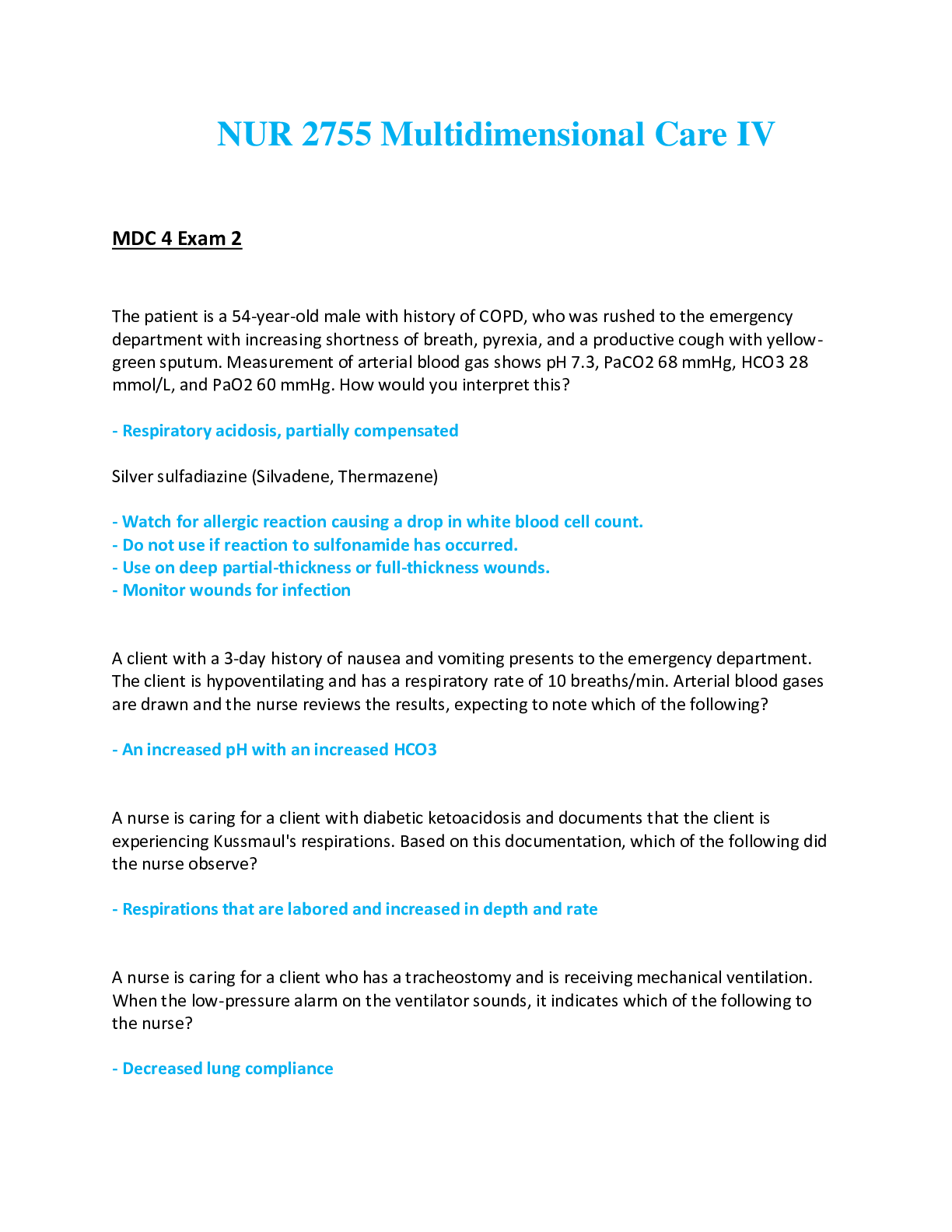
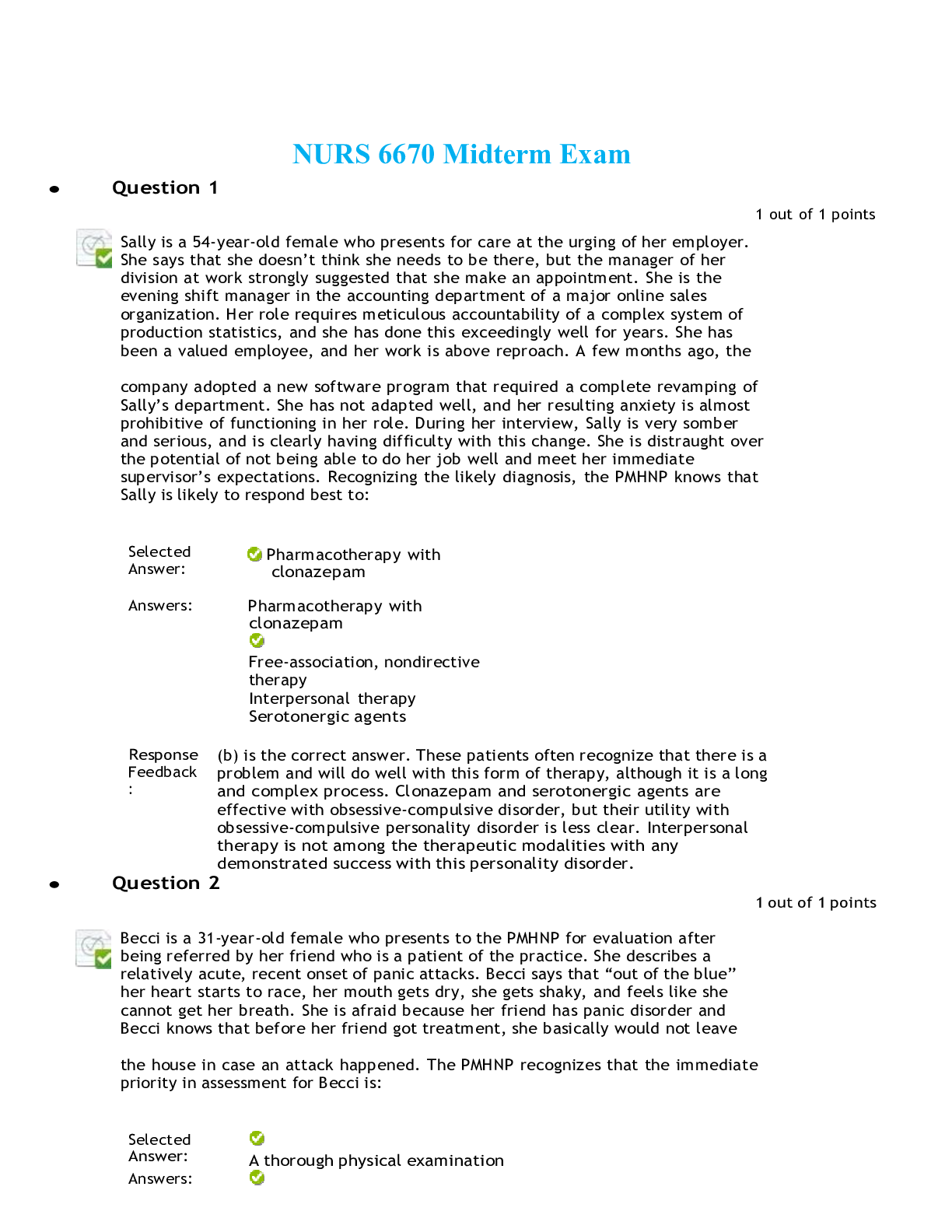

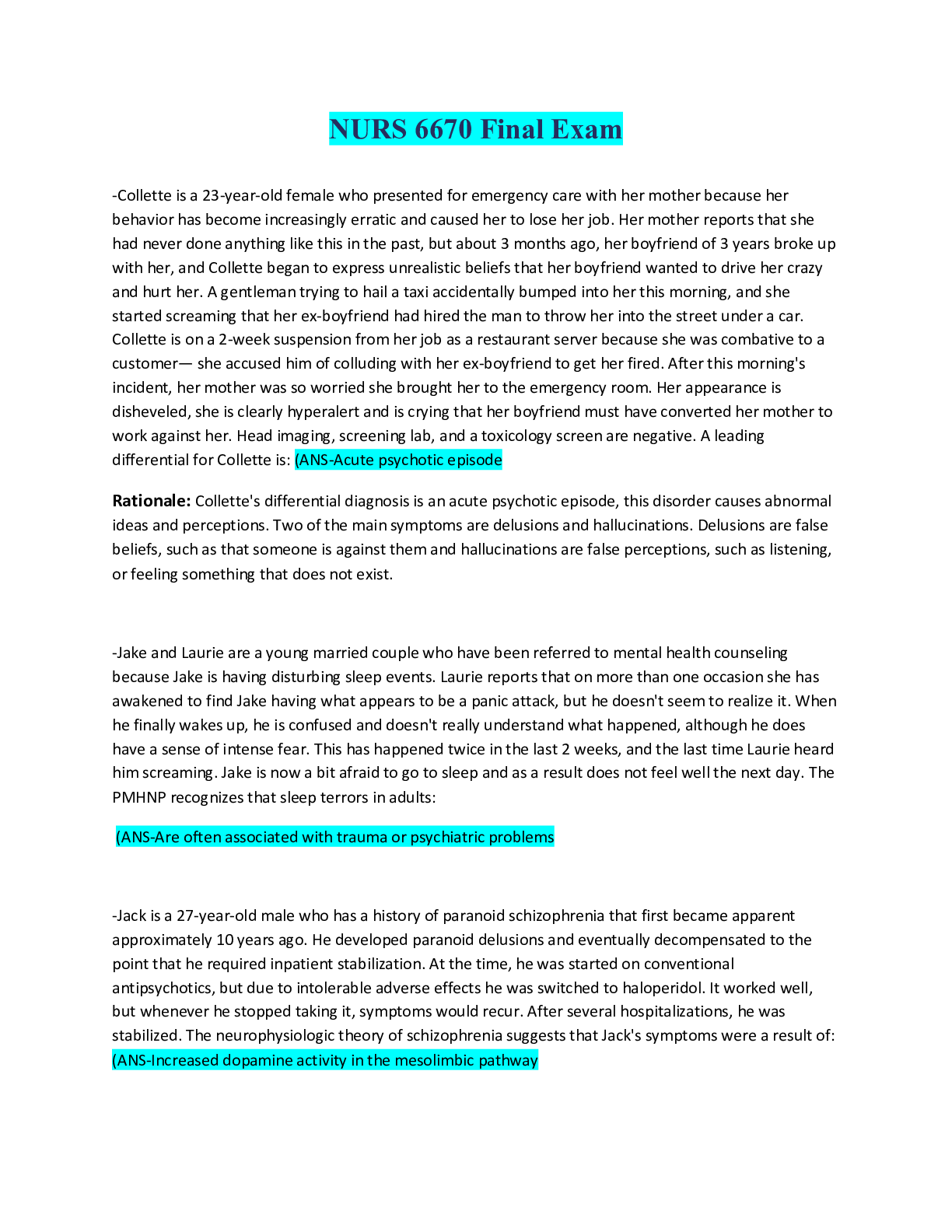

.png)



